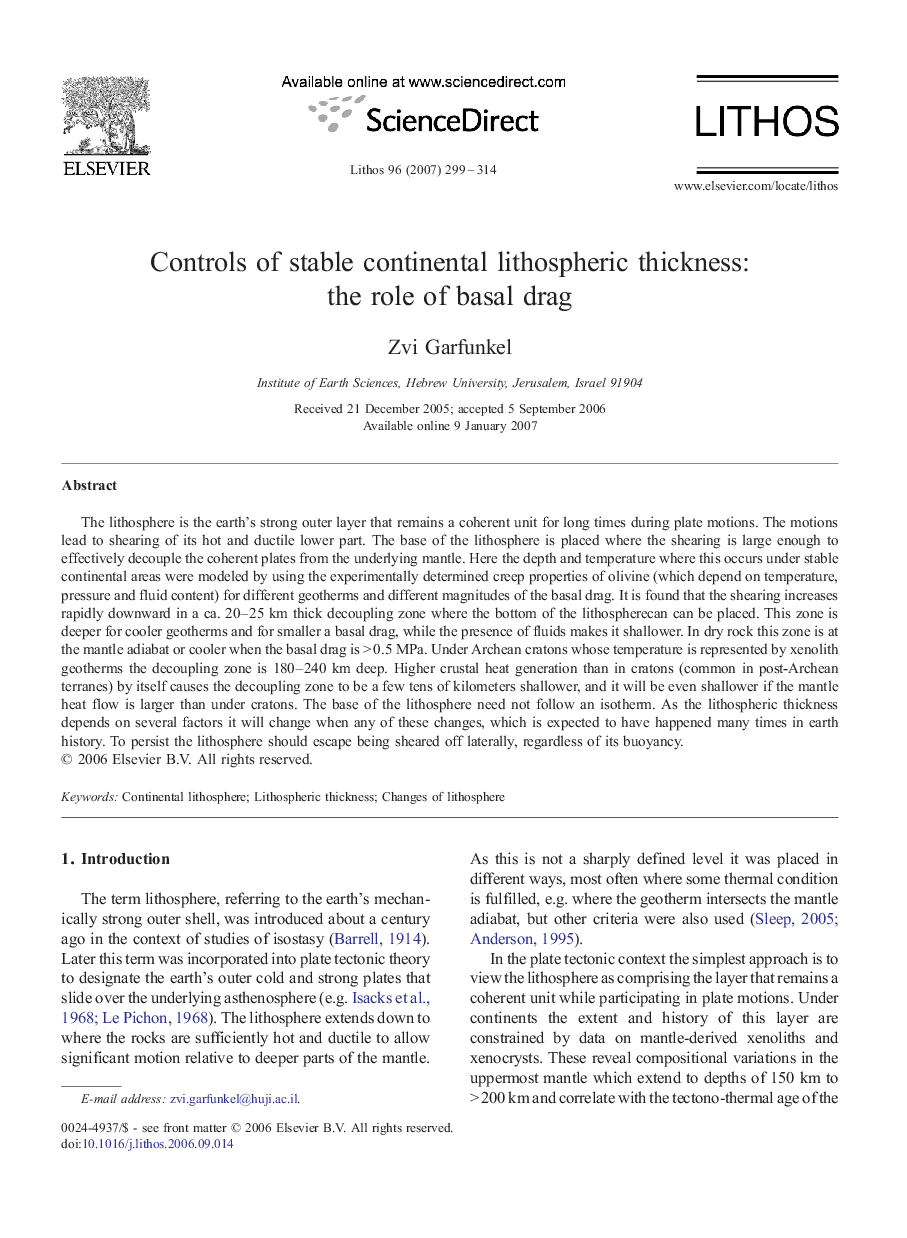| Article ID | Journal | Published Year | Pages | File Type |
|---|---|---|---|---|
| 4717760 | Lithos | 2007 | 16 Pages |
Abstract
The lithosphere is the earth's strong outer layer that remains a coherent unit for long times during plate motions. The motions lead to shearing of its hot and ductile lower part. The base of the lithosphere is placed where the shearing is large enough to effectively decouple the coherent plates from the underlying mantle. Here the depth and temperature where this occurs under stable continental areas were modeled by using the experimentally determined creep properties of olivine (which depend on temperature, pressure and fluid content) for different geotherms and different magnitudes of the basal drag. It is found that the shearing increases rapidly downward in a ca. 20-25Â km thick decoupling zone where the bottom of the lithospherecan can be placed. This zone is deeper for cooler geotherms and for smaller a basal drag, while the presence of fluids makes it shallower. In dry rock this zone is at the mantle adiabat or cooler when the basal drag is >Â 0.5Â MPa. Under Archean cratons whose temperature is represented by xenolith geotherms the decoupling zone is 180-240Â km deep. Higher crustal heat generation than in cratons (common in post-Archean terranes) by itself causes the decoupling zone to be a few tens of kilometers shallower, and it will be even shallower if the mantle heat flow is larger than under cratons. The base of the lithosphere need not follow an isotherm. As the lithospheric thickness depends on several factors it will change when any of these changes, which is expected to have happened many times in earth history. To persist the lithosphere should escape being sheared off laterally, regardless of its buoyancy.
Related Topics
Physical Sciences and Engineering
Earth and Planetary Sciences
Geochemistry and Petrology
Authors
Zvi Garfunkel,
